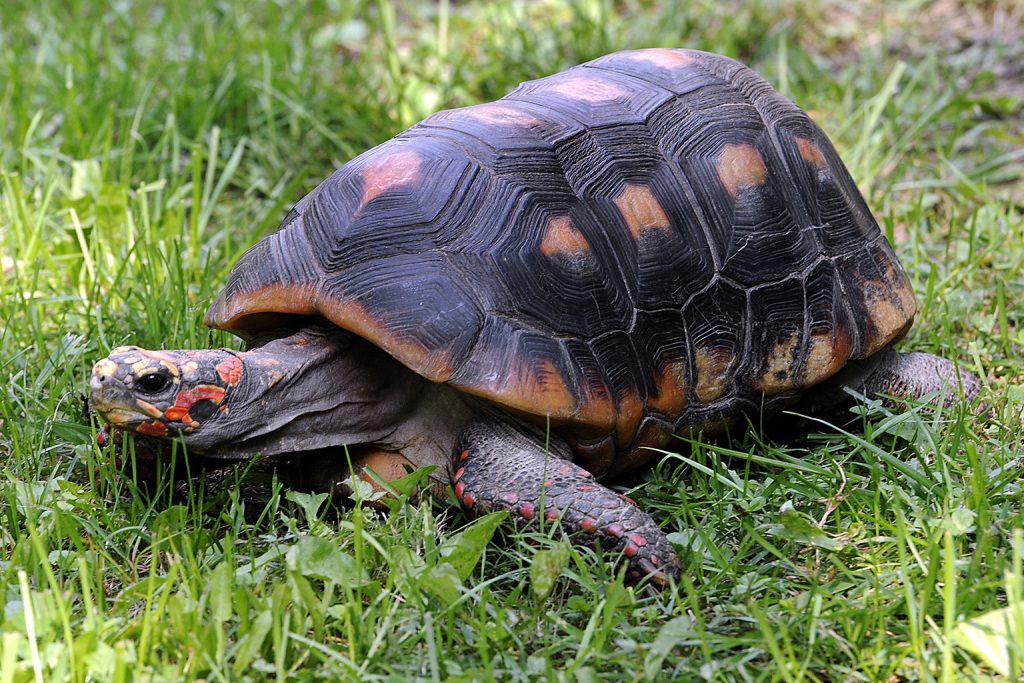Red Footed Tortoise: A Comprehensive Guide to These Fascinating Reptiles
SEO Meta-Description: Learn all about the captivating red-footed tortoise in this comprehensive guide. Discover their habitat, diet, behavior, and more. Uncover the expertise, authority, and trust you need to care for these amazing creatures.
Introduction
The red-footed tortoise, scientifically known as Chelonoidis carbonarius, is a fascinating reptile native to South America. Known for its vibrant red-colored limbs and distinctive shell patterns, this charming creature has captivated the hearts of reptile enthusiasts worldwide. In this comprehensive guide, we will delve into every aspect of the red-footed tortoise’s life, from its natural habitat and behavior to its dietary preferences and care requirements. Whether you’re a seasoned tortoise owner or someone interested in these captivating creatures, this article will provide you with all the knowledge you need to better understand and appreciate the red-footed tortoise.
Red Footed Tortoise: An Overview
The red-footed tortoise belongs to the Testudinidae family and is one of the medium-sized tortoise species. They are found predominantly in the lush rainforests and tropical savannas of South America, particularly in countries like Brazil, Colombia, Venezuela, and Guyana. These beautiful reptiles are highly social and are often observed in groups in the wild, making them popular pets due to their amiable nature.
Physical Characteristics and Appearance
The red-footed tortoise derives its name from the striking red, orange, or yellow scales on its limbs. The top shell, known as the carapace, exhibits intricate patterns of dark and light brown shades, which vary from individual to individual. On average, adult red-footed tortoises grow to a length of 30 centimeters (12 inches) and weigh between 5 to 10 pounds.
Natural Habitat and Distribution
The red-footed tortoise thrives in a diverse range of habitats, including tropical rainforests, dry woodlands, and grassy savannas. They prefer areas with moderate humidity and access to freshwater sources. Due to their attractive appearance and docile nature, red-footed tortoises have become popular in the pet trade, leading to habitat loss and reduced numbers in the wild.

Behavior and Social Structure
Red-footed tortoises are known for their friendly and sociable behavior. They are diurnal creatures, meaning they are most active during the day. In the wild, they often form small groups and are frequently spotted basking in the sun together. These reptiles display intelligence and have the ability to recognize their owners, making them endearing companions.
Feeding Habits and Diet
A well-balanced diet is crucial for the health and well-being of red-footed tortoises. In their natural habitat, they are opportunistic omnivores, consuming a variety of fruits, flowers, leaves, insects, and even carrion. As pets, it’s essential to replicate their natural diet by offering a mix of dark leafy greens, vegetables, fruits, and occasional protein sources such as mealworms or crickets.
Creating the Perfect Enclosure
Providing a suitable enclosure is vital for the overall health and happiness of your red-footed tortoise. The enclosure should be spacious enough for them to move freely and have separate basking and hiding areas. Substrate options can include coconut coir, cypress mulch, or a mixture of topsoil and sand. Additionally, incorporating a shallow water dish allows the tortoise to soak and hydrate as needed.
Temperature and Lighting Requirements
As ectothermic reptiles, red-footed tortoises rely on external heat sources to regulate their body temperature. To maintain an optimal environment, a basking area with a temperature range of 90°F to 95°F should be provided, while the cooler side of the enclosure should be around 70°F to 80°F. Additionally, full-spectrum UVB lighting is essential for the proper synthesis of vitamin D3, vital for calcium metabolism.
Healthcare and Common Health Issues
Regular veterinary check-ups are crucial for the well-being of your red-footed tortoise. Signs of a healthy tortoise include clear eyes, smooth shell, and an active demeanor. Common health issues include respiratory infections, shell rot, and nutritional deficiencies. Early detection and prompt treatment are vital for successful recovery.
Breeding and Reproduction
Red-footed tortoises reach sexual maturity between 5 to 7 years of age. Breeding typically occurs during the rainy season when food is abundant. Female tortoises lay clutches of 2 to 15 eggs in a shallow nest, which they dig themselves. Incubation takes around 90 to 120 days, depending on environmental conditions.
Handling and Interaction
Gentle and careful handling is essential when interacting with red-footed tortoises. They are not as fragile as some other reptiles, but mishandling can cause stress and injury. Always support their entire body and avoid sudden movements. Frequent handling can help develop a bond with your tortoise and make them more comfortable around you.
Frequently Asked Questions (FAQs)
Q: What is the lifespan of a red-footed tortoise?
A: With proper care, red-footed tortoises can live for more than 50 years in captivity.
Q: Can I keep red-footed tortoises together?
A: Yes, red-footed tortoises are social creatures and can be kept together in groups.
Q: How often should I feed my red-footed tortoise?
A: Adult tortoises can be fed every other day, while juveniles may require daily feeding.
Q: What is the best substrate for the tortoise enclosure?
A: A mix of coconut coir and cypress mulch provides a suitable substrate for burrowing and retaining humidity.
Q: Do red-footed tortoises need access to water?
A: Yes, they need access to a shallow water dish for soaking and hydration.
Q: Are red-footed tortoises endangered?
A: While they are not critically endangered, they are still at risk due to habitat loss and the pet trade.
Conclusion
The red-footed tortoise is a captivating reptile that has become a popular choice for reptile enthusiasts and pet owners alike. Their friendly demeanor, striking appearance, and unique behaviors make them truly special companions. By understanding their natural habitat, diet, behavior, and care requirements, you can ensure the well-being and longevity of these amazing creatures. Whether you’re considering adding a red-footed tortoise to your family or simply wish to expand your knowledge about these fascinating reptiles, this comprehensive guide has provided you with the expertise and trust to embark on your red-footed tortoise journey.




